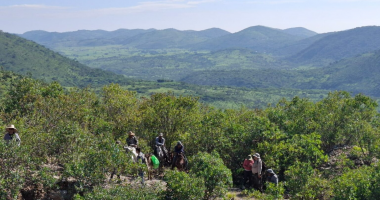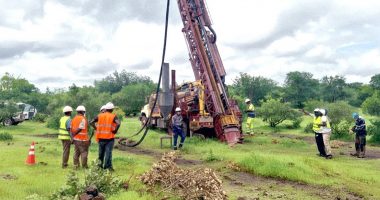As one of Australia’s big four banks, NAB shares were sitting pretty before COVID-19.
Since COVID-19 began in late December, NAB shares have shaved off more than $10.
While they did reach $27.40 in February, the run was offset by a series of losses that saw shares drop to as low as $13.80 in March.
Now, many shareholders are left wondering if NAB shares can return to their pre-COVID-19 prices.
When did the fall begin?
NAB started to see its share price drop in mid-March when the company withdrew its capital notes offer on March 12.
What’s surprising is that this withdrawal came less than a month after the company first announced the offer.
The banking giant claims that the withdrawal came from the substantial change in market conditions in the period leading up to the offer.
However, this withdrawal did not affect shareholders in any way, as their NAB capital notes (NCN) were still purchased for their original price. At the time, NAB stated that it was not considering repricing the offer, given the state of the market.
This offer was first announced on February 17, when NAB stated that all NCN’s issued on March 23, 2015, would be mandatorily purchased on March 23, 2020, for $100 each.
These were then meant to be redeemable in September 2027, when the company was aiming to raise $750 million.
A week later on February 24, NAB announced that it would be increasing its end goal, hoping to now raise at least $1.95 billion.
Throughout these changes, NAB’s share price suffered some heavy blows.
When the offer was first announced on February 17, shares closed for $27.28. They then dropped ever so slightly to $27.11 on February 24.
However, on March 12, they dropped almost $9 to close the day at $18.13.
But, going from bad to worse, NAB shed another $4 dollars off its share price a week and a half later.
Shares in the Aussie banking giant closed at $13.88 each on March 23.
This is when the resale of the NCN’s was completed.
What is NAB doing for those affected by COVID-19?
On March 20, NAB announced a sweeping support package for businesses and personal customers who have been impacted by COVID-19.
NAB announced that businesses and homeowners who are struggling to pay their loans can defer their payments for up to six months.
It also announced that it would be cutting 200bps (basis points – a unit of measurement for interest rates) from the rate of new loans, would reduce rates on small business loans by another 100bps, and implement a further reduction of up to 60bps on fixed-rate home loans.
“Our focus is clear – to support our businesses and personal customers with their financial needs when they want it most,” CEO Ross McEwan stated at the time.
“These measures will provide significant relief to businesses and homebuyers over the next six months as we all deal with this unprecedented situation,” he said.
Then, the company saw its statutory net profit drop from $2.694 billion in the first half of FY19 to $1.313 billion in the first half of FY20.
How are the other big four banks performing?
ANZ
Before COVID-19 hit, ANZ was one of the strongest of Australia’s big four banks, partly due to the massive de-risking of its balance sheet.
However, as a result of COVID-19, ANZ saw a 51 per cent drop in its profits to $1.5 billion and it also took a $815 million hit to the value of its Asian investments.
On March 20 ANZ announced a $6 billion support package to help those affected by COVID-19.
The package included a reduction of some fixed-rates of 0.80 per cent per annum on new loans for small businesses, and a 0.49 per cent per annum reduction for home loan customers.
Variable small business rates were also reduced by 0.25 per cent per annum and variable home loan rates by 0.15 per cent per annum.
ANZ has seen its share price drop from $27.24 on February 21 to as low as $14.10 on March 23.
Commonwealth
Commonwealth has used the funds received from the divestment of its life insurance business and money already received from 1H FY20, to give one-time payments to customers who have been affected by COVID-19 and have had to defer their payments for six months.
The bank also waived any late fees for March from customers who were unable to make their minimum credit card repayment.
Australia’s largest retail bank saw a slight drop in its statutory net profit in the March quarter from the previous year, dropping from $1.75 billion in the third quarter of the 2019 financial year, to $1.3 billion in the third quarter of FY20.
On February 14, Commonwealth’s share price was sitting happily at $90.99 but it significantly dropped to $54.26 on March 23.
Westpac
On April 28, Westpac announced a $2.2 billion impairment to its first-half FY20 results, with approximately $1.6 billion relating to COVID-19 impacts.
The bank has been very hush-hush about how it is helping its customers during this uncertain time.
Statutory net profit for the first half of FY20 was $1.190 billion, down 62 per cent from last year’s $3.173 billion.
Westpac has seen its share price drop from $25.81 in mid-February, to $14.10 in mid-March.
What’s next?
Despite the turbulent times, Bell Potter still classifies NAB shares as a buy.
Based on data from Morningstar, the financial planner has issued a 12-month target price of $17.50 per share, which is more than a $2 increase from yesterday’s close of $15.24.
So as one of Australia’s biggest four banks, NAB shares could be a bargain buy for an investor looking to gain exposure to the banking big four.





